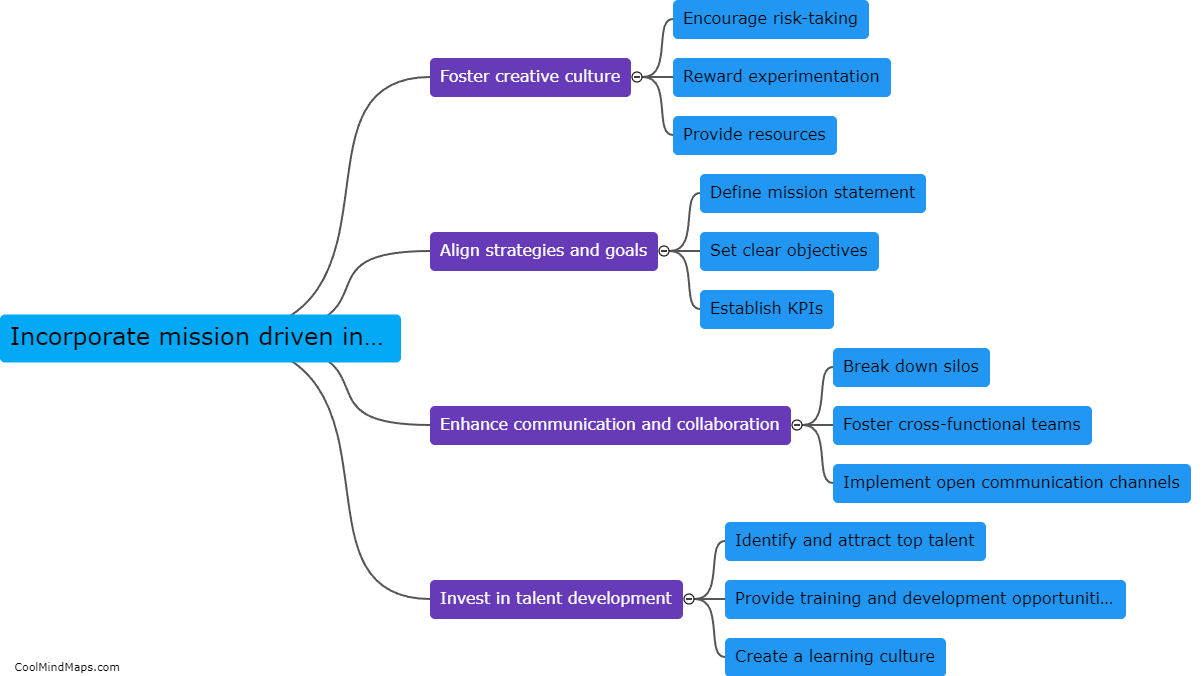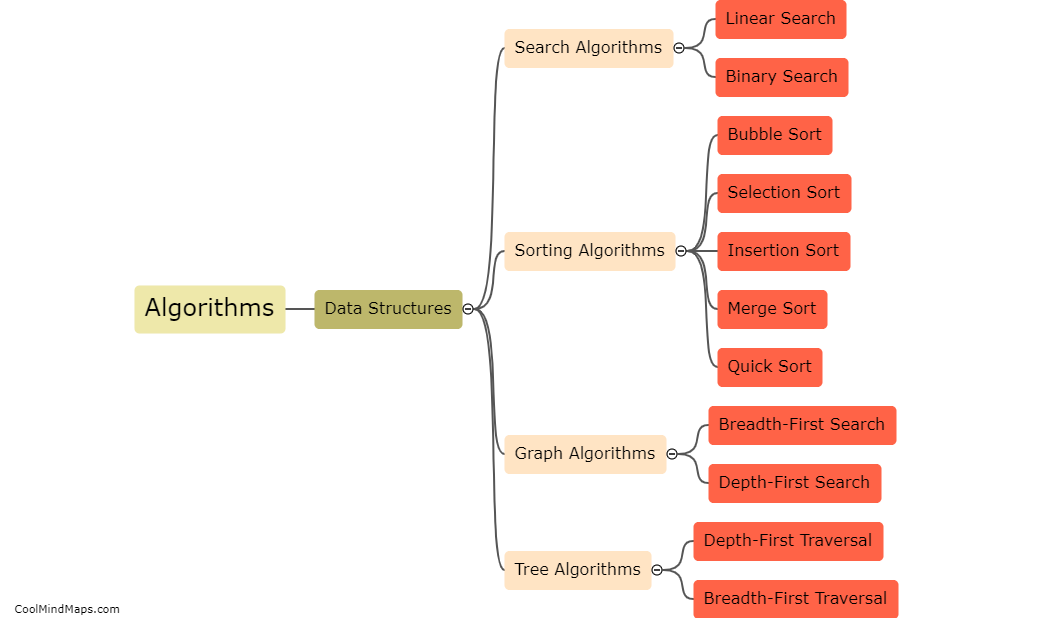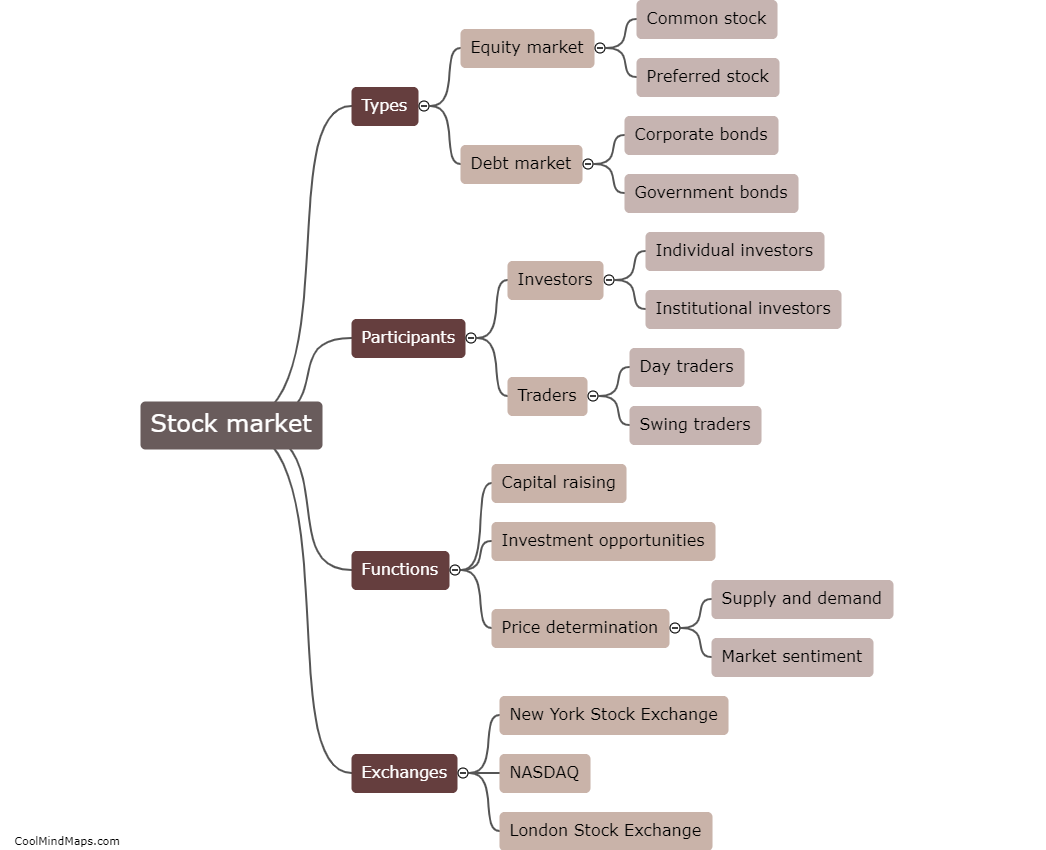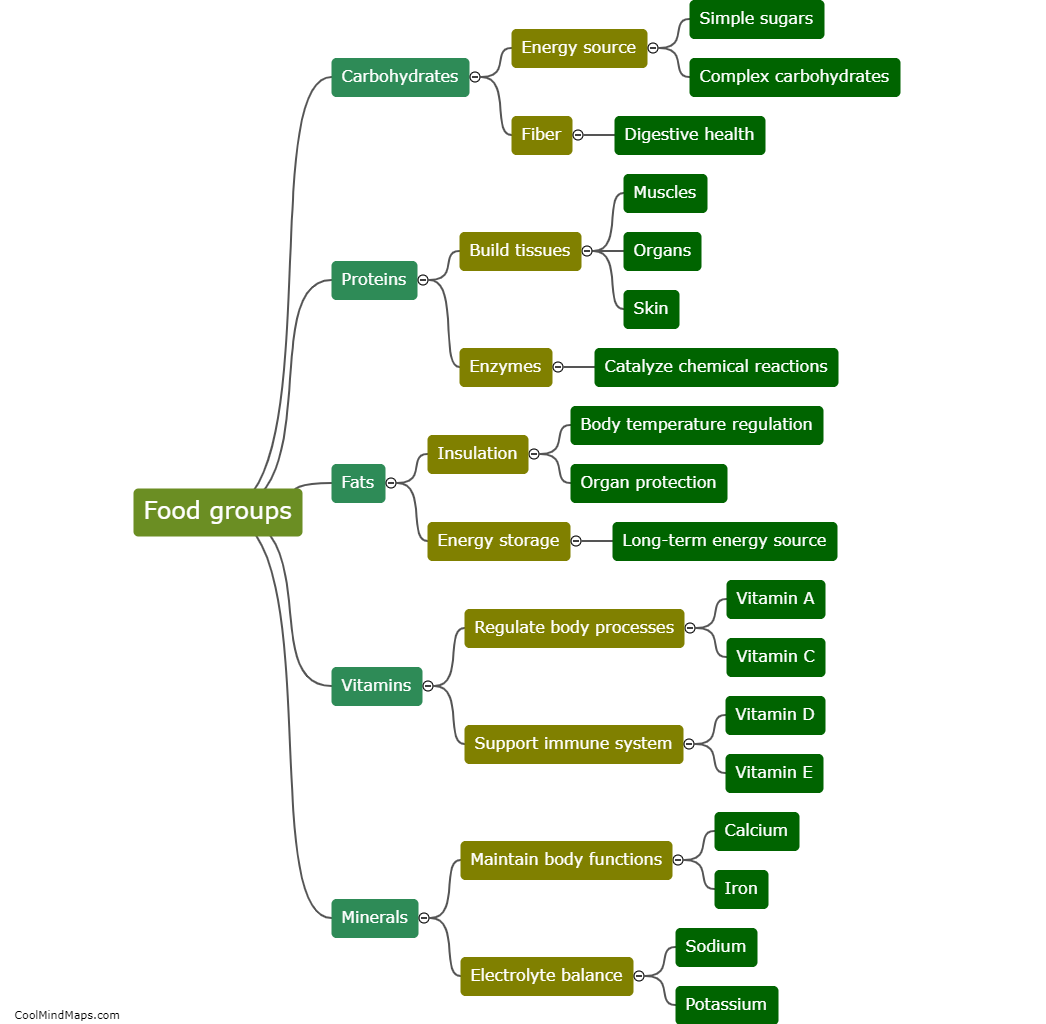What are the different types of data structures?
Data structures are essential components in computer science as they help organize and manage data efficiently. There are various types of data structures, each designed to serve different purposes. Some common examples include arrays, which store a fixed-size sequence of elements in contiguous memory; linked lists, where elements are connected via pointers; stacks, which follow the Last-In-First-Out (LIFO) principle; queues, where elements follow the First-In-First-Out (FIFO) principle; trees, which organize data in a hierarchical manner; and graphs, which represent networks of interconnected nodes. Each data structure has its own advantages and disadvantages, and choosing the appropriate one depends on the specific application and data manipulation requirements.

This mind map was published on 5 December 2023 and has been viewed 74 times.











